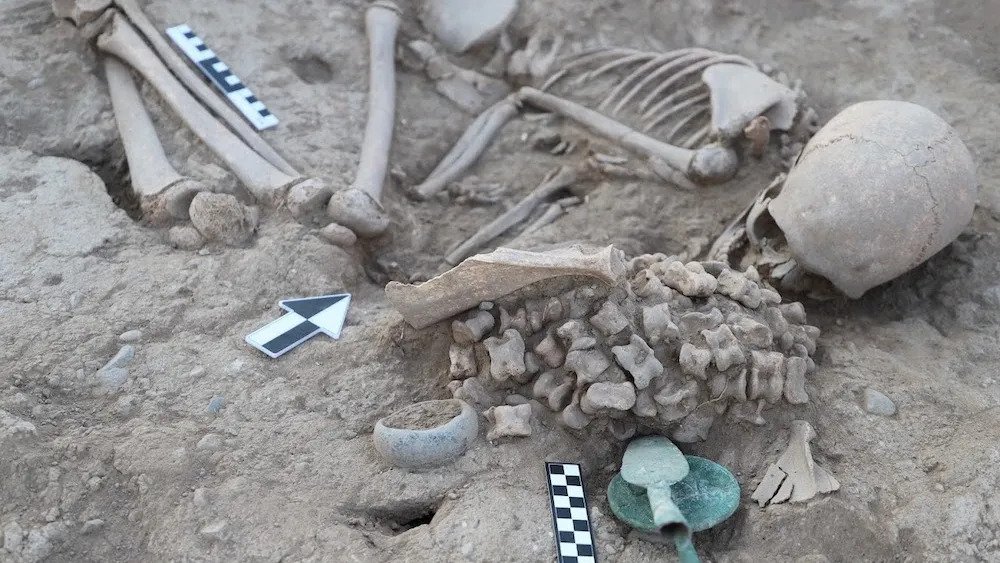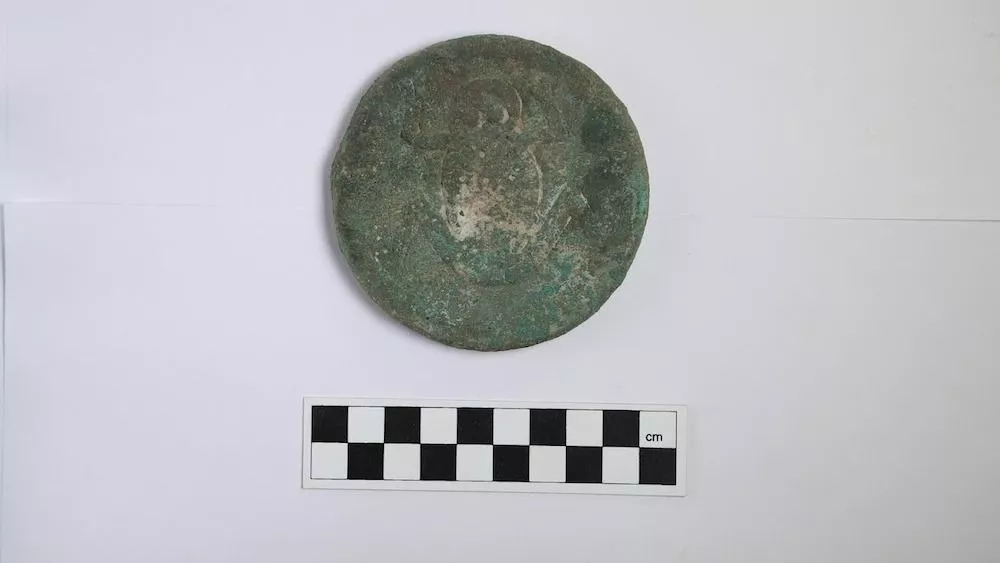Bronze Age Girl Interred With Over 150 Ankle Bones Of Animals, Potentially Serving As Aid For Her Journey To The Afterlife
Archaeologists in Kazakhstan have unearthed a burial mound of a Bronze Age girl surrounded by a variety of grave goods.

The burial mound of a Bronze Age girl unearthed in Kazakhstan contains a plethora of grave goods, including dozens of animal bones that may have been used for ceremonial purposes and a carving of a frog on a bronze disc.
Since 2017, researchers have been working at this site, located in Ainabulak (also spelled Aynabulaq or Aina-bulak), a village in the eastern part of the country.
Since then, they’ve discovered more than 100 burial mounds dating to the Bronze Age, including this one, which they found on Aug. 2, according to The Astana Times, an English-language news outlet in Kazakhstan.
Although researchers know little about the girl’s identity, the wealth of artifacts in her burial reveal clues about her role within her community during the Bronze Age, which in Central Asia lasted between 3200 B.C. and 1000 B.C., according to Oxford Academic.
She was “buried on her left side, bent over,” Rinat Zhumatayev, an archaeologist who led the excavation and heads the Department of Archaeology, Ethnology and Museology at Al-Farabi Kazakh National University in Kazakhstan, told Live Science in an email. “There were small wire earrings in both ears and beads around her neck.”
Radiocarbon dating of the skeleton revealed that the girl was between 12 and 15 years old when she died.
Archaeologists also discovered that she was buried with 180 astragalus (ankle) bones — likely from sheep or cattle — as well as three shoulder blades from cows, several metal pommels (the butt ends of swords), a mirror and a bronze bowl.
But another grave good stood out to archaeologists: a bronze disc carved with the likeness of a frog at the center. This finding marks the first time that such an object has been discovered in Kazakhstan.
“The image of the frog has [had] different meanings among many peoples since antiquity,” Zhumatayev said. “It’s associated with the image of a woman in labor and the cult of water … but requires more study [to determine its true meaning].”

Researchers were also intrigued by the sheer number of animal bone fragments interred in the burial mound. While they had seen other graves containing animal remains on the Eurasian steppe, often in child and adolescent burials, the multitude of bones buried with this individual was extravagant.
Some scientists think that the burial of astragalus bones was part of a “cult practice” and that the bones were used during meditation.
However, other researchers view the bones as “symbols of well-being” and “good luck” that served as a “wish for a successful transition from [one] world to others,” Zhumatayev said.
In addition to this burial, archaeologists made a “groundbreaking” discovery of a pyramid with a hexagonal base in the Abai region north of this site, according to The Asana Times.
All of these findings “have an important historical and cultural significance for the study of the early stages of the Bronze Age,” Zhumatayev said.



